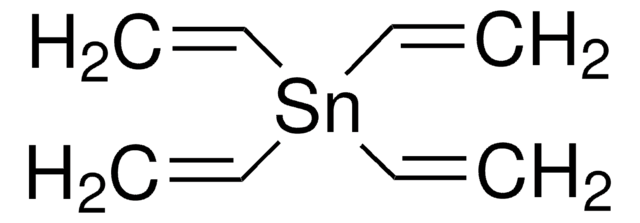698431
Tetrakis(dimethylamido)tin(IV)
99.9% trace metals basis
Synonym(s):
Tin(IV) dimethylamide
About This Item
Recommended Products
Quality Level
Assay
99.9% trace metals basis
form
liquid
reaction suitability
core: tin
SMILES string
CN(C)[Sn](N(C)C)(N(C)C)N(C)C
InChI
1S/4C2H6N.Sn/c4*1-3-2;/h4*1-2H3;/q4*-1;+4
InChI key
WHXTVQNIFGXMSB-UHFFFAOYSA-N
Looking for similar products? Visit Product Comparison Guide
Related Categories
General description
Signal Word
Danger
Hazard Statements
Precautionary Statements
Hazard Classifications
Acute Tox. 4 Oral - Flam. Liq. 2 - Skin Corr. 1B
Storage Class Code
3 - Flammable liquids
WGK
WGK 3
Flash Point(F)
18.0 °F - closed cup
Flash Point(C)
-7.8 °C - closed cup
Personal Protective Equipment
Certificates of Analysis (COA)
Search for Certificates of Analysis (COA) by entering the products Lot/Batch Number. Lot and Batch Numbers can be found on a product’s label following the words ‘Lot’ or ‘Batch’.
Already Own This Product?
Find documentation for the products that you have recently purchased in the Document Library.
Customers Also Viewed
Articles
Thin film photovoltaic devices have become increasingly important in efficiently harnessing solar energy to meet consumer demand.
Our team of scientists has experience in all areas of research including Life Science, Material Science, Chemical Synthesis, Chromatography, Analytical and many others.
Contact Technical Service



![Bis(trimethylaluminum)-1,4-diazabicyclo[2.2.2]octane adduct](/deepweb/assets/sigmaaldrich/product/structures/978/293/6c8c7fbe-4b40-4576-bd40-94ac58cbe057/640/6c8c7fbe-4b40-4576-bd40-94ac58cbe057.png)







